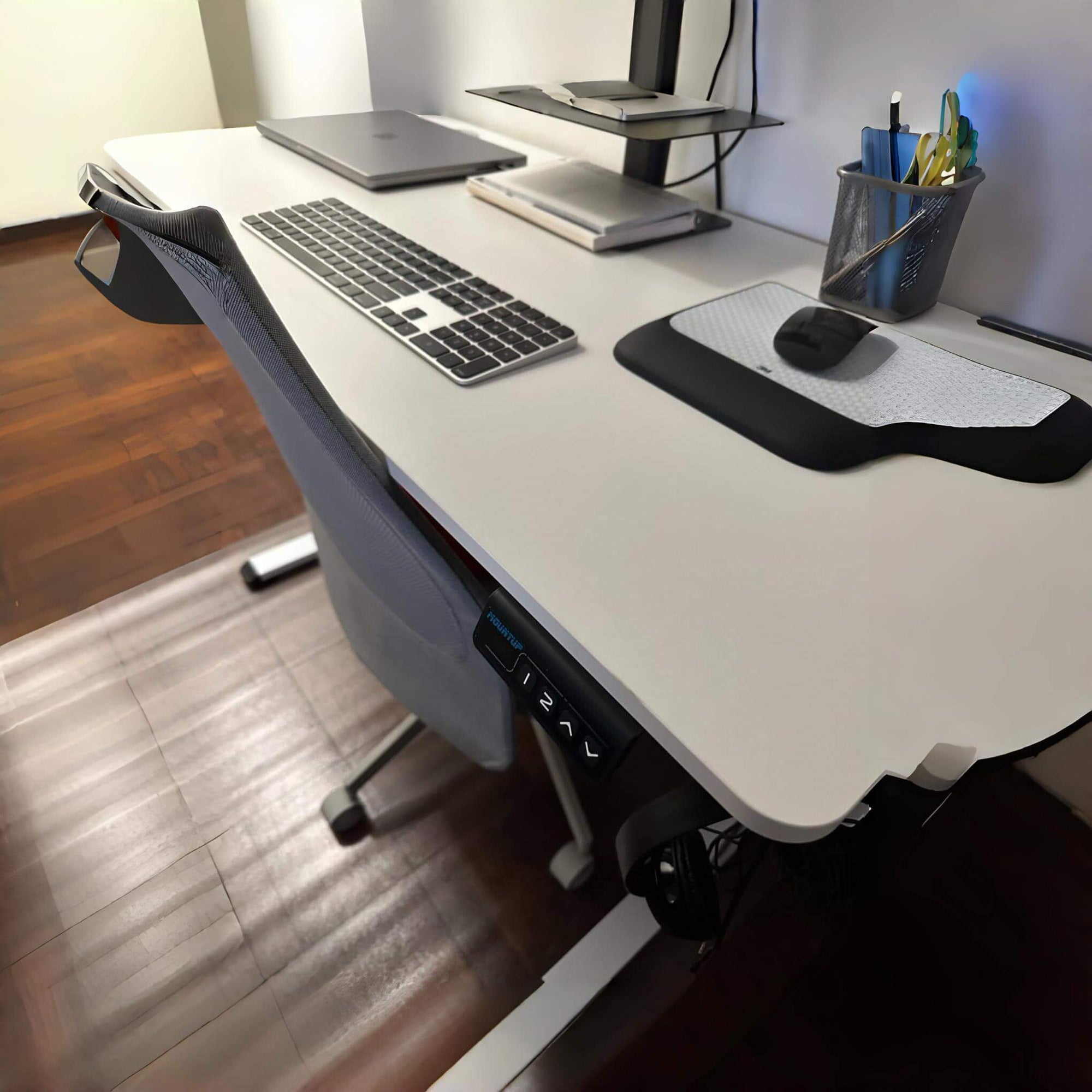In today's modern world, ergonomics has become a critical aspect of both personal and professional environments. As more people engage in sedentary jobs, the importance of creating spaces that promote physical well-being and efficiency cannot be overstated. Ergonomics is not just about comfort; it is a science that aims to optimize human performance and reduce the risk of injury by designing tools, workstations, and practices that fit the user. This article delves into the fundamentals of ergonomics, its health benefits, workplace applications, economic impact, and future trends.

Key Takeaways
- Ergonomics is essential for reducing the risk of musculoskeletal disorders and repetitive strain injuries.
- Proper ergonomic practices can significantly improve mental well-being and overall job satisfaction.
- Implementing ergonomic solutions in the workplace can boost productivity and reduce healthcare costs.
- Ergonomics extends beyond office settings and is crucial in industrial, healthcare, and educational environments.
- Future trends in ergonomics include technological innovations, remote work solutions, and sustainable practices.
The Fundamentals of Ergonomics
Defining Ergonomics
Ergonomics is the science of designing and arranging things people use so that the people and things interact most efficiently and safely. The basic premise of ergonomics is to understand human needs and their space to interact with co-workers, as well as to provide physical space for work. Effective ergonomic design aims to improve comfort, efficiency, and productivity by reducing discomfort and risk of injury.
Historical Development of Ergonomics
The field of ergonomics has evolved significantly over time. Initially, it focused on optimizing physical tasks and environments, but it has since expanded to include cognitive and organizational ergonomics. This evolution reflects a growing understanding of the complex interactions between humans and their work environments.
Core Principles of Ergonomics
The core principles of ergonomics include:
- Fit the task to the person: Design workspaces and tools that accommodate individual needs and limitations.
- Promote neutral postures: Encourage body positions that minimize stress on muscles and joints.
- Reduce excessive force: Minimize the amount of physical effort required to perform tasks.
- Ensure clear information: Provide easy-to-understand instructions and feedback.
- Encourage movement: Design tasks and environments that promote regular movement and changes in posture.
Understanding and applying these principles can lead to safer, more comfortable, and more productive work environments.
Health Benefits of Ergonomics
Reduction of Musculoskeletal Disorders
Ergonomics plays a crucial role in reducing musculoskeletal disorders (MSDs). By designing workspaces that promote proper posture and reduce strain, employees experience fewer injuries related to over-exertion and repetitive movements. This not only improves their physical health but also enhances their overall well-being.
Prevention of Repetitive Strain Injuries
One of the significant benefits of ergonomics is the prevention of repetitive strain injuries (RSIs). These injuries are common in workplaces where repetitive tasks are performed. Ergonomic solutions, such as adjustable chairs and desks, help in minimizing the risk of RSIs, ensuring that employees remain healthy and productive.
Improvement in Mental Well-being
Ergonomics positively impacts mental well-being by creating a comfortable and supportive work environment. When employees are free from physical discomfort, they can focus better on their tasks, leading to improved mental clarity and reduced stress levels. This contributes to a more positive and productive workplace atmosphere.
The health benefits that come with ergonomics keep employees healthy at work, encouraging safety on another level.
Ergonomics in the Workplace
Designing Ergonomic Workstations
In a workplace setting, ergonomics refers to designing and arranging workspaces, tools, and equipment to fit the needs of workers. By utilizing ergonomics, employers can create a workplace that promotes employee health and safety, reduces the risk of injuries and illnesses, and improves job satisfaction and productivity. For example, workplace ergonomics safety can involve:
- Analyzing a job’s tasks and physical demands and designing workstations and tools that fit the worker, rather than forcing the worker to adapt to the workspace
- Utilizing ergonomically designed tools like keyboards and mice
- Implementing practices like frequent breaks and stretching exercises to reduce physical strain
Ergonomic Tools and Equipment
Proper ergonomics is important in the workplaces of any industry. In addition to reducing the risk of injury, ergonomics positively impacts productivity and job satisfaction. Employees are more likely to be engaged with their work and perform at a higher caliber when they feel comfortable and supported in their workspace. These benefits reach beyond industrial workspaces and prevention of bodily injury. Ergonomic workstations in office settings can also help reduce eye strain, headaches, and other discomforts.
Implementing Ergonomic Practices
To get you started, here are a few things to consider as you make changes to your workplace:
- Get an ergonomic assessment
- Train employees on the importance of ergonomics
- Regularly review and update ergonomic practices
Proper ergonomics is crucial for maintaining a healthy and productive work environment. By focusing on the design and function of workspaces, employers can ensure that their employees are both comfortable and efficient.
Economic Impact of Ergonomics
Boosting Productivity
Implementing ergonomic practices in the workplace can lead to a 25% increase in productivity. Proper ergonomics ensures that employees are comfortable and less fatigued, which directly impacts their efficiency and output. When workers are not struggling with discomfort or pain, they can focus better on their tasks, leading to higher quality work and fewer errors.
Reducing Healthcare Costs
Ergonomics is well worth the investment. By reducing the incidence of work-related injuries, companies can see a significant decrease in healthcare costs. For instance, there is a 68% reduction in worker’s compensation costs and a 39% reduction in cost per claim. These savings can be substantial, especially for large organizations with many employees.
Enhancing Employee Retention
Employees are more likely to stay with a company that values their well-being. Ergonomic workspaces contribute to higher job satisfaction and engagement. When employees feel comfortable and supported, they are less likely to seek employment elsewhere. This not only helps in retaining talent but also reduces the costs associated with hiring and training new employees.
From increased productivity to reduced healthcare costs, the benefits of ergonomic workspaces extend far beyond mere comfort.
Ergonomics Beyond the Office
Ergonomics in Industrial Settings
In industrial settings, ergonomics plays a crucial role in enhancing worker safety and productivity. By analyzing a job’s tasks and physical demands, workstations and tools can be designed to fit the worker, rather than forcing the worker to adapt to the workspace. This approach not only reduces the risk of injury but also boosts overall efficiency.
Ergonomics in Healthcare
Healthcare professionals often face physically demanding tasks. Implementing ergonomic solutions, such as adjustable beds and ergonomic furniture, like adjustable desks and chairs, allows for a customizable fit that supports the body's natural posture. These adjustments are crucial in preventing repetitive strain injuries and ensuring the well-being of healthcare workers.
Ergonomics in Education
In educational settings, ergonomics can significantly impact both students and teachers. Ergonomically designed furniture and tools can help reduce physical strain and improve concentration. For instance, adjustable chairs and desks can accommodate different body sizes and postures, promoting a healthier learning environment.
Ergonomics is not limited to office environments; its principles can be applied across various sectors to enhance comfort, safety, and productivity.
Future Trends in Ergonomics
Technological Innovations
Technological advancements are revolutionizing the field of ergonomics. A key development in monitor mounting systems is the growing focus on ergonomic design. Market reports project that the global ergonomic office furniture market will continue to expand, driven by innovations such as adjustable desks and chairs, wearable ergonomic devices, and smart office solutions.
Remote Work Ergonomics
With the rise of remote work, ergonomics has become more critical than ever. Companies are now investing in ergonomic home office setups to ensure employees remain comfortable and productive. This includes providing ergonomic chairs, adjustable desks, and proper monitor mounting systems. Educating employees on the importance of ergonomics and training them on proper techniques is also essential.
Sustainable Ergonomic Solutions
Sustainability is becoming a significant focus in ergonomic design. Manufacturers are now creating ergonomic products that are not only comfortable and efficient but also environmentally friendly. This includes using sustainable materials and designing products that have a longer lifespan, reducing waste and promoting a healthier planet.
Ergonomics needs to evolve and safety professionals need to conduct regular evaluations of the measures already in place. Conducting ergonomic risk assessments helps identify potential ergonomic hazards and provides the foundation for designing work environments that prioritize safety and comfort.
Conclusion
In conclusion, the importance of ergonomics in the workplace cannot be overstated. As we have explored, proper ergonomic practices not only reduce the risk of injuries such as repetitive stress injuries (RSIs) and musculoskeletal disorders but also enhance overall productivity and job satisfaction. By designing workstations and tools that fit the worker, encouraging regular breaks, and utilizing ergonomically designed equipment, businesses can create a healthier and more efficient work environment. Ultimately, investing in ergonomics is an investment in the well-being and performance of employees, leading to a more successful and sustainable business.
Frequently Asked Questions
What is ergonomics?
Ergonomics is the study of how people interact with their surroundings, particularly the tools and equipment they use. The goal is to design workstations and tools that fit the worker, rather than forcing the worker to adapt to the workspace.
Why is ergonomics important in the workplace?
Proper ergonomics in the workplace reduces the risk of injury, enhances productivity, and improves job satisfaction. Employees are more likely to be engaged and perform at a higher caliber when they feel comfortable and supported.
What are some common ergonomic practices?
Common ergonomic practices include using ergonomically designed tools like keyboards and mice, taking frequent breaks, and performing stretching exercises to reduce physical strain.
How does ergonomics impact health?
Ergonomics helps in reducing the risk of musculoskeletal disorders and repetitive strain injuries. It also contributes to better mental well-being by creating a comfortable and supportive work environment.
What is the economic impact of ergonomics?
Ergonomics can boost productivity, reduce healthcare costs, and enhance employee retention by creating a healthier and more efficient workplace.
Are there ergonomic considerations beyond office settings?
Yes, ergonomics is important in various settings including industrial environments, healthcare, and education. Each setting has unique ergonomic needs that must be addressed to ensure safety and efficiency.
Meta Description
Discover the importance of ergonomics, its health benefits, workplace applications, and economic impact.




